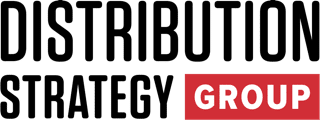U.S. business activity continued its growth trajectory in June, though at a slower pace, as inflation surged due to rising tariffs and export demand weakened.
This data, from S&P Global’s Flash U.S. PMI report, also reveals a complex economic environment marked by rising costs and a less optimistic outlook. “The U.S. economy continued to grow at the end of the second quarter, but the outlook remains uncertain, especially with inflationary pressures rising sharply over the past two months,” said Chris Williamson, chief business economist at S&P Global Market Intelligence.
The Flash U.S. Composite PMI Output Index stood at 52.8 in June, dipping slightly from 53.0 in May, indicating a two-month low. While any reading above 50 in the Purchasing Managers Index signals expansion, the slower pace reflects a cooling in business activity after months o growth, S&P said.
Service sector activity also showed signs of slowing. The Flash Services PMI Business Activity Index fell to 53.1 from 53.7 in May, suggesting a deceleration in momentum. Meanwhile, manufacturing displayed modest improvement. The Flash U.S. Manufacturing Output Index rose to 51.5, a four-month high, and the broader Flash Manufacturing PMI held steady at 52.0.
The data, collected from June 12 to 20, provides a mixed economic picture: While domestic demand and job creation remain strong, a decline in exports and inflationary pressures—particularly in manufacturing—are weighing on overall growth, S&P said.
“Although business activity and new orders have continued to grow in June, growth has weakened due to falling exports of both goods and services,” Williamson said. “While domestic demand has strengthened, notably in manufacturing, it is partly driven by stock building—a practice often linked to concerns about higher prices and supply issues caused by tariffs. This boost is likely to unwind in the coming months.”
The decline in both goods and services exports continued in June, with services exports experiencing their steepest quarterly drop since late 2022. U.S. services exports include licensing fees for intellectual property, money spent in the U.S. by foreign tourists and fees charged by U.S. banks and advisory firms, among other things.
Manufacturers, meanwhile, built inventory by ramping up input purchases, increasing stockpiles in anticipation of potential tariff-related disruptions. Input inventories rose at the second fastest pace in the past three years, while finished goods inventories saw their largest increase in nine months.
Inflationary pressures intensified across both manufacturing and services sectors. Two-thirds of manufacturers reported higher input costs due to tariffs, with over half of them passing on these cost increases to customers in the form of higher selling prices. As a result, input and output prices in the manufacturing sector rose at their fastest rates since July 2022, according to S&P.
The service sector was similarly affected. While inflation moderated slightly compared to May, service providers reported steep increases in input costs, often driven by tariffs on inputs like food, alongside rising labor, financing, and fuel expenses. Overall, June marked the second-largest rise in combined goods and services prices since September 2022.
Businesses responded to rising workloads with a surge in hiring. Employment increased at the fastest rate in over a year, with manufacturing jobs hitting a 12-month high and services jobs reaching a five-month peak. However, backlogs of work grew at the fastest pace in more than three years, highlighting ongoing capacity constraints, S&P said.
Business confidence for the year ahead took a slight dip in June. Service sector sentiment declined due to ongoing political and fiscal uncertainties, particularly concerns about potential spending cuts. On the other hand, manufacturers grew slightly more optimistic, buoyed by expectations that protectionist trade policies might benefit their sector.
While the economy continues to expand, the data from June points to an increasingly fragile outlook, influenced by rising inflation, declining exports, and uncertain future demand. With inflation remaining a key concern and future sentiment subdued, the Federal Reserve is likely to hold interest rates steady in the near term to monitor the evolving economic landscape.
Williamson further noted, “The data corroborate speculation that the Fed will remain on hold for some time, both to gauge the economy’s resilience and assess how long this current bout of inflation lasts.”
Final June data will be published on July 1 for manufacturing and July 3 for services and composite indicators. The S&P Global Flash U.S. PMI is compiled from responses to questionnaires sent to a panel of about 650 manufacturers and 500 service providers, reflecting the broader health of the economy, S&P said.
Don’t miss any content from Distribution Strategy Group. Join our list.
